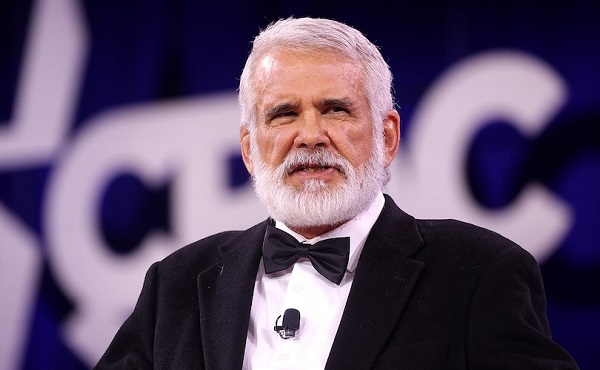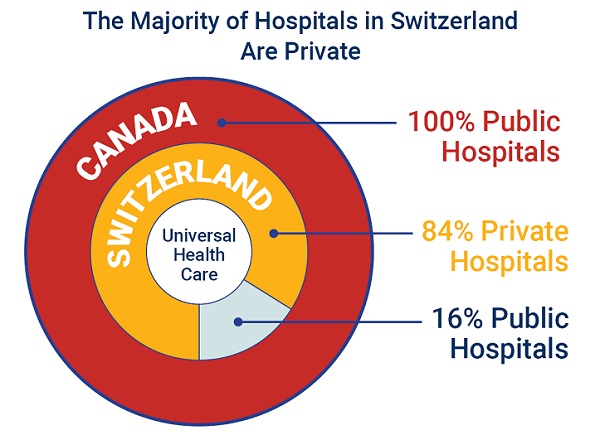Health
In Pursuit of Providing World Class Healthcare

Originally published in the Red Deer Advocate January 17, 2018
By Iaian Park, CEO Red Deer Regional Health Foundation
The Government of Alberta recently released its healthcare priority spending list. Of note was that the Red Deer Regional Hospital was not included on that list.
Firstly, as a Central Albertan I am disappointed: I feel for the physicians, nurses and other healthcare workers looking for tools to do their jobs to their maximum potential. I feel for people facing wait times in excess of 10 hours while trying to access medical treatment. I feel for patients who must travel great distances to get the healthcare those in major cities already take for granted. I could go on.
However, as the Chief Executive Officer of the only major charity funding the Red Deer Hospital, I have another perspective. I see this as an opportunity…a responsibility… to step up the funding we provide to the Red Deer Regional Hospital. Our Board of Directors recently made a minor change to our vision so that it is now an action statement:
“Dedicated to the pursuit of providing world class healthcare”
These volunteer Board members, those who set the tone for our organization, have doubled down on their commitment. They chose to add “Dedicated to the pursuit of” to what was previously “World class healthcare for Central Albertans”. They are increasing their resolve to fulfill our mission to the hospital.
New equipment, services and programs need to be added to the hospital, of that there is no question. However, there are plenty of current programs, services and pieces of equipment that can be improved, modified or upgraded. Central Albertans can help to make sure that what we do have is the best it can be.
You, your family, your neighbors and fellow Central Albertans can ensure that healthcare workers in the Red Deer Regional Hospital have the best equipment for the programs and services they currently provide. You can make sure that our healthcare workers come to work knowing that the equipment they have is the best available so they can provide world class healthcare.
Here is a recent example of a system that works:
Dr. Horne of Laboratory Services at the Red Deer Regional Hospital said: “We would never be able to purchase this equipment without funding from the Festival of Trees and the Red Deer Regional Health Foundation.”
Laboratory Services was the recipient this year of Festival of Trees proceeds. Given Dr. Horne’s current department budget, there would not be enough money to purchase the equipment provided by Festival – not in the short term, and likely not in the long term.
So thanks to you, Central Alberta, you have funded equipment for the Red Deer Hospital that likely would have never otherwise been purchased. You have made an impact on the care Central Albertans receive – potentially saving lives! Your support has made it possible for staff in the lab to process samples more efficiently and provide results quicker to our physicians. This improved efficiency will save lives.
You can continue to ensure that the Red Deer Regional Hospital has access to the best equipment for the current services and programs they run. You can donate funds or time to the Red Deer Regional Health Foundation. Either way, you will be contributing to the pursuit of providing world class healthcare for Central Albertans.
On behalf of the Board of Directors, Volunteers and Staff of the Red Deer Regional Health Foundation, I thank you for funding or volunteering with us in the past, and I thank you for considering our Foundation in the future. You can make an impact on the healthcare provided to Central Albertans.
Ian Park
For more information on how to donate or volunteer please call 403.343.4773, email [email protected], or visit www.rdrhfoundation.com.
Read more stories from Todayville.com.
Fraser Institute
Long waits for health care hit Canadians in their pocketbooks

From the Fraser Institute
Canadians continue to endure long wait times for health care. And while waiting for care can obviously be detrimental to your health and wellbeing, it can also hurt your pocketbook.
In 2024, the latest year of available data, the median wait—from referral by a family doctor to treatment by a specialist—was 30 weeks (including 15 weeks waiting for treatment after seeing a specialist). And last year, an estimated 1.5 million Canadians were waiting for care.
It’s no wonder Canadians are frustrated with the current state of health care.
Again, long waits for care adversely impact patients in many different ways including physical pain, psychological distress and worsened treatment outcomes as lengthy waits can make the treatment of some problems more difficult. There’s also a less-talked about consequence—the impact of health-care waits on the ability of patients to participate in day-to-day life, work and earn a living.
According to a recent study published by the Fraser Institute, wait times for non-emergency surgery cost Canadian patients $5.2 billion in lost wages in 2024. That’s about $3,300 for each of the 1.5 million patients waiting for care. Crucially, this estimate only considers time at work. After also accounting for free time outside of work, the cost increases to $15.9 billion or more than $10,200 per person.
Of course, some advocates of the health-care status quo argue that long waits for care remain a necessary trade-off to ensure all Canadians receive universal health-care coverage. But the experience of many high-income countries with universal health care shows the opposite.
Despite Canada ranking among the highest spenders (4th of 31 countries) on health care (as a percentage of its economy) among other developed countries with universal health care, we consistently rank among the bottom for the number of doctors, hospital beds, MRIs and CT scanners. Canada also has one of the worst records on access to timely health care.
So what do these other countries do differently than Canada? In short, they embrace the private sector as a partner in providing universal care.
Australia, for instance, spends less on health care (again, as a percentage of its economy) than Canada, yet the percentage of patients in Australia (33.1 per cent) who report waiting more than two months for non-emergency surgery was much higher in Canada (58.3 per cent). Unlike in Canada, Australian patients can choose to receive non-emergency surgery in either a private or public hospital. In 2021/22, 58.6 per cent of non-emergency surgeries in Australia were performed in private hospitals.
But we don’t need to look abroad for evidence that the private sector can help reduce wait times by delivering publicly-funded care. From 2010 to 2014, the Saskatchewan government, among other policies, contracted out publicly-funded surgeries to private clinics and lowered the province’s median wait time from one of the longest in the country (26.5 weeks in 2010) to one of the shortest (14.2 weeks in 2014). The initiative also reduced the average cost of procedures by 26 per cent.
Canadians are waiting longer than ever for health care, and the economic costs of these waits have never been higher. Until policymakers have the courage to enact genuine reform, based in part on more successful universal health-care systems, this status quo will continue to cost Canadian patients.
Health
Just 3 Days Left to Win the Dream Home of a Lifetime!

|
|
|
|
|
-

 Health2 days ago
Health2 days agoRFK Jr. appoints Robert Malone, Martin Kulldorff, other COVID shot critics to overhauled CDC vaccine panel
-

 Alberta2 days ago
Alberta2 days agoOil prices are headed for a hard fall
-

 Business2 days ago
Business2 days agoOur addiction to dairy supply management is turning Canada into a trade pariah
-

 Business2 days ago
Business2 days agoThe carbon tax’s last stand – and what comes after
-

 Business2 days ago
Business2 days ago84% of Swiss hospitals and 60% of hospitalizations are in private facilities, and they face much lower wait times
-

 Bruce Dowbiggin2 days ago
Bruce Dowbiggin2 days agoCanadians Thinks America Owes Them. Trump Has Other Ideas
-

 conflict1 day ago
conflict1 day agoIsrael strikes Iran, targeting nuclear sites; U.S. not involved in attack
-

 Business1 day ago
Business1 day agoTrump: ‘Changes are coming’ to aggressive immigration policy after business complaints












